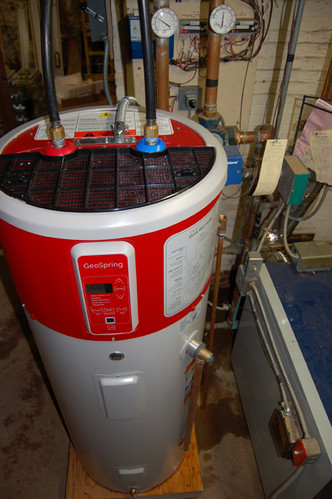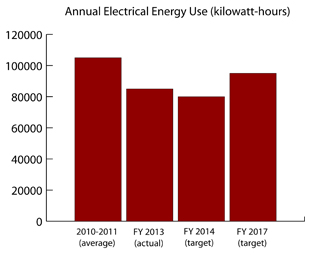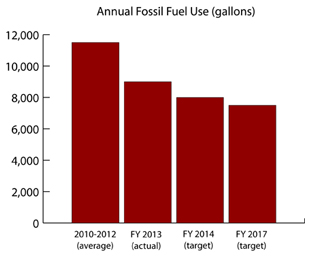The Wrack
The Wrack is the Wells Reserve blog, our collective logbook on the web.
The Wrack is the Wells Reserve blog, our collective logbook on the web.
In my last post, I focused on the conversion part of our C-Change. Here I focus on our equally important conservation efforts.
Since we launched our ambitious energy initiative in early 2012, our yearly use of propane and heating oil has dropped 20 percent, from an average of 11,500 gallons before we started to 9,000 gallons today. At the same time, we have reduced electrical energy use from an annual average of 105,000 kilowatt-hours to 85,000 kilowatt-hours, a 22 percent reduction.
How did we achieve such dramatic cuts?
 Smarter Operations: We limited the use of public spaces (auditorium and library) to Tuesdays, Wednesdays, and Thursdays between late December and the end of March, closing the buildings when not in use the other 4 days. As visitation drops off substantially during winter, we also closed our exhibit areas. We moved to a 4-day work week, with full-time staff working longer days or telecommuting. During temporary building closures, we turned down the heat and kept the lights off.
Smarter Operations: We limited the use of public spaces (auditorium and library) to Tuesdays, Wednesdays, and Thursdays between late December and the end of March, closing the buildings when not in use the other 4 days. As visitation drops off substantially during winter, we also closed our exhibit areas. We moved to a 4-day work week, with full-time staff working longer days or telecommuting. During temporary building closures, we turned down the heat and kept the lights off.While we have taken great strides over the past 18 months, our efforts will continue as our quest to conserve and convert is eternal. As energy-hogging equipment wears down, from lawn mowers to light bulbs, we will substitute energy efficient replacements. We will continue the transition to renewable energy sources while monitoring and streamlining our daily practices, leading by example to the greatest extent practical.
 Conserving Electricity
Conserving ElectricityWe expect our electricity use to continue its decline over the short term, but then to increase toward FY 2017. The projected rise results from our plan to use renewable electrical energy instead of fossil fuels when heating our buildings during the "shoulder" months of April, May, September, and October. We may also have an on-site caretaker living in the Farmer's Cottage (currently unoccupied) by then.
 We hope to reduce fossil fuel use by FY 2017 through continued conservation measures and a greater reliance on solar energy. If we are able to install additional photovoltaic systems, we will move to electric heat and reduce or eliminate the use of fossil fuels during spring and fall.
We hope to reduce fossil fuel use by FY 2017 through continued conservation measures and a greater reliance on solar energy. If we are able to install additional photovoltaic systems, we will move to electric heat and reduce or eliminate the use of fossil fuels during spring and fall.
* C-Change is a term borrowed from Daniel Yergin’s book The Quest: Energy, Security, and the Remaking of the Modern World.